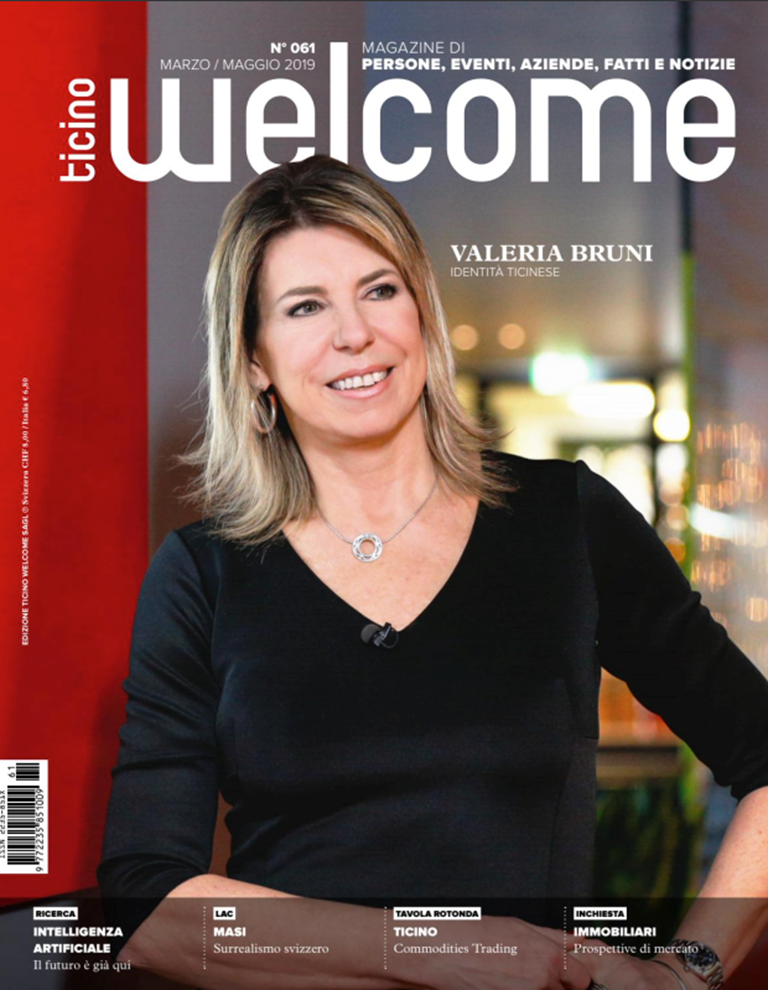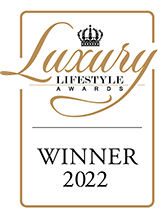Ticino Welcome N°61 - March 2019, CONNECTED WITH LUXURY

CONNECTED WITH LUXURY
UELI SCHNORF AND PHILIPP PETER, OWNERS OF WETAG CONSULTING EXPLAIN WHAT IT MEANS TO KNOW ABOUT LUXURY IN THE WORLD, WHAT VALUE IT HAS AND WHO IT SERVES.
It is well known that your company represents the world's most exclusive network in the luxury real estate sector, Christie's. How does it feel to be in this privileged position?
"Fine, thank you" (both smiling).
Can we go into a little more detail?
"We feel privileged to be able to witness a world of beauty, of extraordinary value, with works that represent the height of creativity and construction quality. It is also very satisfying to be able to be counted among the few true specialists in such a demanding sector as ours. At the moment, we are particularly pleased because we manage to achieve excellent results with our company even in a somewhat difficult economic environment: 2018 was one of Wetag's record years."
Can you list the factors that contribute to your success?
"Above all, it is thanks to a truly exceptional team with a very passionate attachment to work. We also believe in specialisation, we prefer to do one thing well and not many things in a mediocre way. In addition, we have an absolutely avant-garde marketing. But at the heart of it all is the knowledge that we know our industry very well. We are used to measuring ourselves against the best in the world, year after year. And the knowledge we have as owners we try to share it 100% with our team".
How does Ticino measure up against the 'best in the world'?
"The basis is perseverance, professionalism and curiosity. We have more than 20 years' experience and have never stopped learning. In the last 12 months we have been to a Real Estate congress in Argentina, in Mallorca we visited restored Fincas, in Mykonos we were invited to a party in a stratospheric villa by the sea, in Sardinia we were among the three realtors invited to visit the biggest villa on the market (150 million euros), in Australia we learned about lightweight construction techniques and visited luxury resorts. And again, during Palm Beach's "Modernist Week" we were invited to talk about "Modernism" and visit one of the world's most famous villas (Kaufman House). In Las Vegas, three of our team spent a whole week as speakers at the world's most important meeting on luxury real estate. In April this year we will be at Christie's Annual Conference in Paris and visit the most luxurious properties on the market at the time, and in September we will go to Athens... And so year after year, with the result that there is probably hardly anyone who has visited more luxury properties than us. Throughout the years we have been invited to become partners or representatives of the most prestigious luxury real estate marketing networks: Christie's, Leading Real Estate Companies of the World, and others. From them we are regularly rewarded for important websites or marketing or sales, in competition with all other real estate agencies in the world".
And how do these enormous efforts of yours benefit your clients?
"Globally, Switzerland is regarded as a dream location, one of the most preferable places to live. It attracts very prestigious clients who are delighted to be able to come into contact with people who have an up-to-date and in-depth knowledge of all the variations and nuances of luxury in the world".
And how do you define luxury in Ticino?
"We sell properties over CHF 1.5 million, and we talk about luxury from CHF 3 million upwards. But you have to realise that in other countries luxury might start from 800,000 CHF, or at least 8 million CHF".
WETAG CONSULTING IMMOBILIARE SA
Luxury Real Estate for sale in Ticino, Switzerland
Riva Antonio Caccia 3
CH-6900 Lugano
Via Antonio Ciseri 13A
CH-6600 Locarno
Via Monte Verità 1
CH-6612 Ascona
www.wetag.ch
www.journal.wetag.ch
[email protected]
+41(0)91 601 04 40


